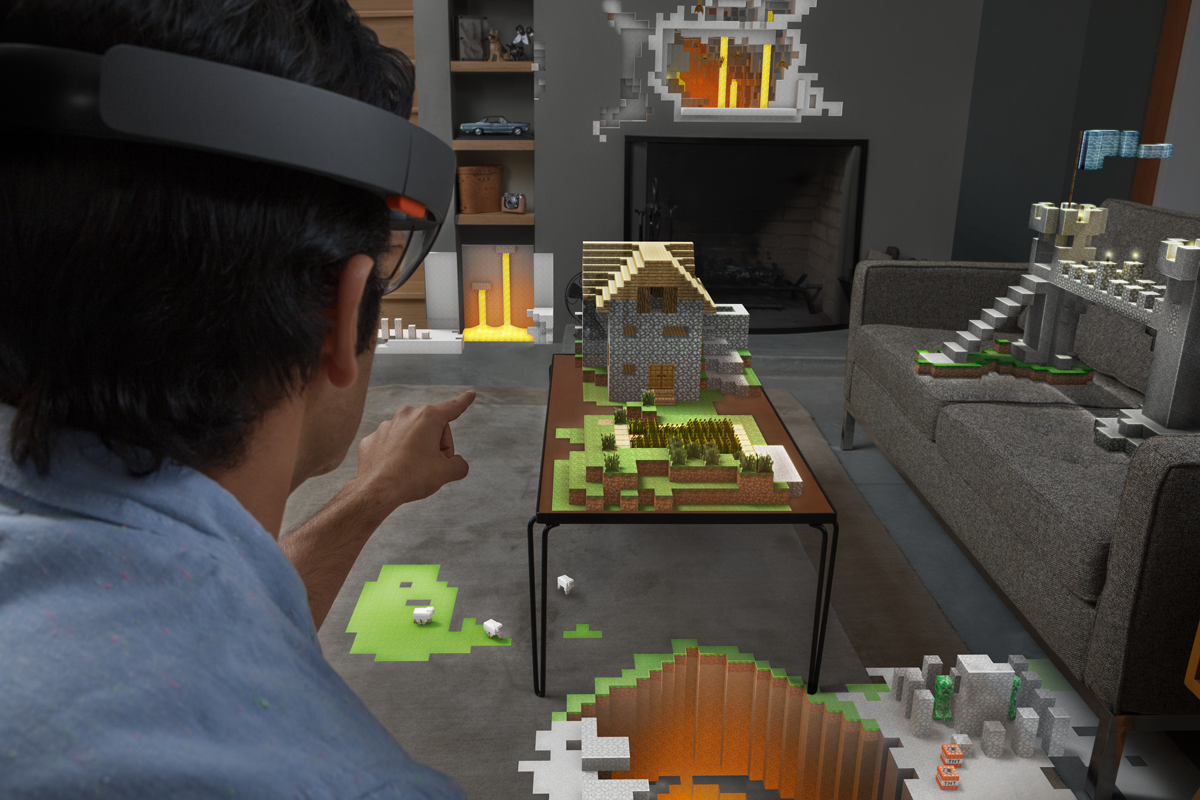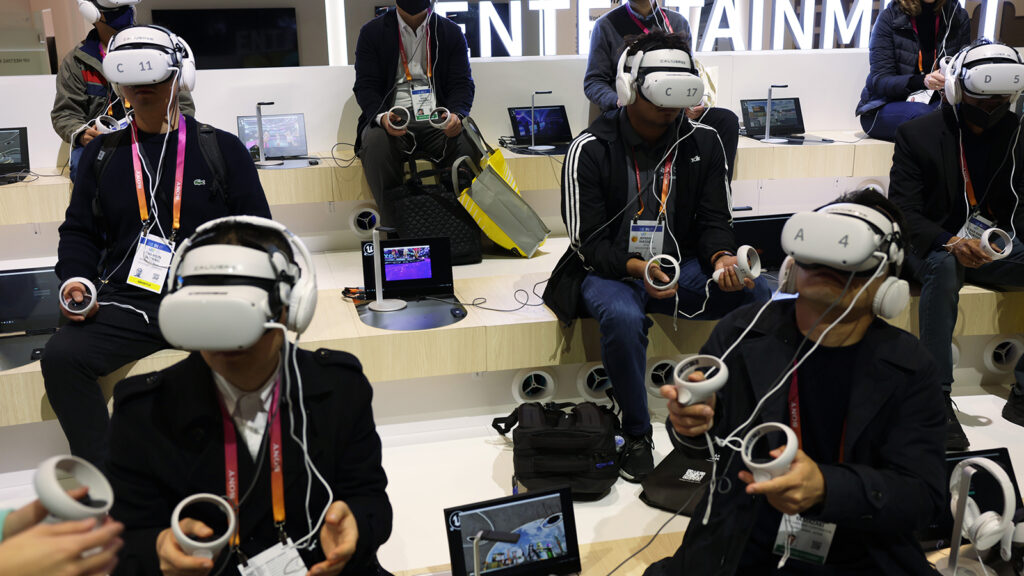
A person demonstrates how a house bought on the metaverse could be interacted with in augmented reality.
There is a lot of excitement in the tech world about the metaverse, and it is beginning to draw investors. Microsoft’s purchase of the gaming giant Activision Blizzard is widely seen as a metaverse play. And even within the metaverse itself, transactions are becoming more common.
Republic Realm describes itself as a digital real estate company. It recently announced the purchase of a $4.3 million plot in the metaverse of Sandbox. This is thought to be the largest metaverse real estate transaction to date. BRINK spoke to the CEO of Republic Realm, Janine Yorio, to find out what it entails.
BRINK: What do you intend to do with the digital real estate that you bought?
YORIO: We haven’t yet announced what we will develop on this land, but our intention is to develop something amazing with Atari, the gaming company.
BRINK: How do you buy digital real estate — can you explain the process?
YORIO: Buying metaverse real estate is actually fairly simple and similar to how you would buy a piece of land in the real world. A piece of metaverse real estate is called a parcel, which is sold as an NFT on the blockchain; you can buy most NFTs (including metaverse real estate) through NFT marketplaces like OpenSea.
BRINK: It seems like quite a few people are starting to buy real estate in these metaverses. Do you think there is a risk of a digital real estate bubble?
YORIO: Of course, there is a risk in anything that is this new. Buying virtual real estate, though, is not done at random. We approach our purchases like any other investment, by using an Asset-Based Valuation Model. Using this model, we look at comparable sales on OpenSea and on nonfungible.com for recent trades, pricing trends and sales volume. In that way, it is very similar to any real-world asset purchase including real estate but also gold or stocks. We ask the questions, what were the economics of the last similar trade and is the price trending up or down, based upon the most recent sales. We also stress the importance of diversification.
Experiences that you currently have over the internet — and many you don’t yet — will one day take place in the metaverse.
BRINK: Is there a risk that, as these metaverses multiply, the value of real estate might decline because there’s no limit as to the amount of digital real estate that can be created?
YORIO: Future copies of metaverses like The Sandbox will have to contend with its network effects, similar to how the proliferation of Bitcoin replicas did not lessen Bitcoin’s significance. The Sandbox’s 165+ relationships with vendors, gaming companies and software developers will not be carried over to the next metaverse without some difficulty. Some examples worth noting: The most successful NFT projects like Bored Ape Yacht Club and Solana Monkey Business have large virtual real estates, as do TV entertainment including the Walking Dead and the Smurfs, as well as music acts like Deadmau5, Snoop Dog, and Richie Hawtin, not to mention Adidas and Atari.
Furthermore, when more businesses and individuals establish themselves in virtual worlds, no new land will be generated on these initial metaverse worlds, making land on the high-quality metaverses increasingly rare. In a blockchain-based metaverse, saying land is endless is fundamentally incorrect.
BRINK: How do people access a metaverse?
YORIO: Popular metaverses can be accessed from any computer by navigating to their websites, like Decentraland.com and SomniumSpace.com. These are free to use and anyone can access the metaverse through them. You just create your avatar and enter.
BRINK: How do you think people will use metaverses — for entertainment, work, etc.?
YORIO: Experiences that you currently have over the internet — and many you don’t yet — will one day take place in the metaverse. The possibilities of the metaverse to blur the lines between the physical and the virtual mean that online meetings, events, shopping and more will all be transformed significantly. As talent moves over to the metaverse, experiences will improve creating more possibilities.
BRINK: To a company that is not familiar with the metaverse(s), could you explain what the business opportunity is?
YORIO: Brands are increasingly recognizing the importance of having a virtual presence in the metaverse, where their customers can interact with their products in a more immersive manner than before. Adidas, the Walking Dead, and Snoop Dogg are building virtual locations that act as community hotspots. They offer a new touchpoint for people to interact with these brands. Developers and investors who can bring commercial infrastructure to the metaverse may soon call brands like these tenants.
BRINK: Is there a risk of this all becoming too immersive and taking people away from the real world?
YORIO: The metaverse will do more to replace the time we already spend on the internet rather than give us entirely novel reasons to log on to the internet. Consider it a more immersive online experience, rather than a replacement for real life.




